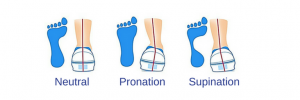A lower back pain article on a Podiatry blog? Surely not…
Why on earth is there a blog about lower back pain on a Podiatry website I hear you ask? Well I will get to that later, but for now lets focus on lower back pain and why it happens…
Do you suffer from an aching back? Pain shooting from your back into the legs? Do you find it hard getting up when you have sat down for too long? Also having to rub your lower back after walking or standing a lot? These are common issues people mention to me when treating their feet, though often on the surface we mention these as just “back pain”. The pain can impact an individuals quality of life significantly and stop you doing what you want to do.
Lets start off with a staggering fact about lower back pain. In a study by the Global Pain Index in 2014, they found that 94% of people who experience pain in their body also experience some type of lower back pain. They also quoted that lower back pain is the most common cause of disability.
The back is a very intricate part of the body. The spine acts as the main framework that connects our upper body and lower body and provides the route for important nerves running from the brain right down to the feet. It is surrounded by large powerful muscle groups, which in turn, have tendons and ligaments connecting from the spine to the shoulders, rib, pelvis, hips and legs. The structure has a large bearing on how we move, so should never be ignored by any health professional.
Anyone can have back pain at any time. There are many reasons for back pain including:
- Getting older. Back pain is more common the older you get, you may first have back pain when you are 25 to 40 years old.
- Poor physical fitness. Back pain is more common in people who are not fit.
- Being overweight. A diet high in calories and fat can make you gain weight. More weight can stress the back and cause pain.
- Some causes of back pain, such as ankylosing spondylitis, a form of arthritis that affects the spine, can have a genetic component.
- Other diseases. Some types of arthritis and cancer can cause back pain.
- Your job. If you have to lift, push, or pull while twisting your spine, you may get back pain. If you work at a desk all day and do not sit up straight, you may also get back pain.
- Smoking – believe it or not. Your body may not be able to get enough nutrients to the disks in your back if you smoke. Smoker’s cough may also cause back pain. People who smoke are slow to heal, so back pain may last longer
“But you’re just a Podiatrist – you only look at the feet”
An inaccurate assumption is that Podiatrists only look at the feet and ignore everything above the ankle. Though traditional “Chiropody” focused solely on the foot anatomy, in Podiatry we have the skills and knowledge to assess how foot and leg positions can cause issues with the hips and lower back. Conditions such as Osteoarthritis, Sciatica, Bursitis, Illiotibial Band Syndrome and Sacro Illiaic Joint Dysfunction can be affected and caused by anatomical alignment issues and bio-mechanical stress.
The body should be considered as a rather complex puzzle. There are direct links to how we move and control our gait with our feet, and the forces which are then placed on our back. For example, restriction of movement at the big toe join can increase knee flexion during walking, therefore cause extra stress on the lower back. It has also been shown that flat feet encourages excessive hip movements, which strains the hips and lower back causing long term strain and pain.
Humans also like to compensate for pain. If we suffer from heel, arch or ankle pain, we will change our gait accordingly to offload our discomfort. This leads to unusual and excessive forces being placed on the hips and back creating secondary issues. Therapists should therefore always take a holistic approach to any assessment and while offering treatment, also provide correct referral pathways to other medical professionals who may also be able to help you.
At FootPro Podiatry we provide a thorough lower limb and MSK assessment that will review the relationship between the feet, legs and back. Your leg length difference will be assessed during the appointment so that we can identify issues that may or may not be present at that time. We will then offer therapeutic orthotics to help manage your condition and pain along with providing suitable exercise programmes. We will also help to guide you to other suitable therapists who may complement our particular treatments. At FootPro Podiatry we believe in multidisciplinary team working for our patients when necessary to achieve the best results for you. Don’t just live with back pain – deal with it.

